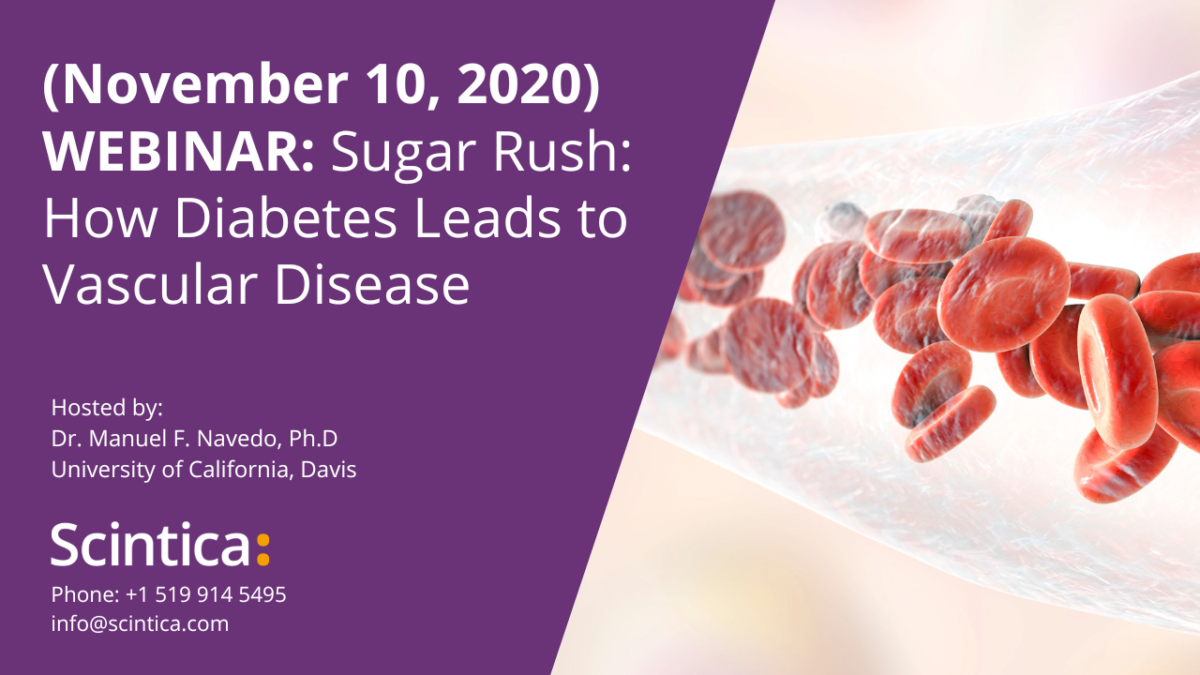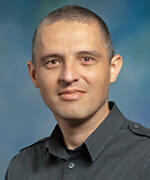(November 10, 2020) WEBINAR: Sugar Rush: How Diabetes Leads to Vascular Disease
Diabetes is a devastating disease affecting millions worldwide. Vascular complications are a major cause of morbidity and mortality in the diabetic population. Although much effort has been placed in examining mechanisms of endothelial dysfunction in diabetes, vascular smooth muscle complications are understudied. The L-type Ca2+ channel CaV1.2 plays key roles in vascular smooth muscle excitability, muscle contraction and gene expression. Exaggerated CaV1.2 activity has been implicated in the chain of events contributing to hyperglycemia-induced vascular complications during diabetes, but the mechanisms for this remains the subject of investigation.
In this webinar, Dr. Navedo discussed new data describing a previously unappreciated pathway that gets activated by hyperglycemic conditions and contributes to changes in vascular function. He presented evidence that activation of this pathway can contribute to changes in vascular smooth muscle CaV1.2 activity and vascular reactivity in animal models of diabetes and diabetic patients. The exquisite detail of the dissected signaling pathway and the link to vascular complications was made possible by the implementation of a multiscale approach that examines changes from the biochemical level to single-molecule biophysics to changes in cerebral blood flow and systemic blood pressure. For this, Dr. Navedo uses 1) sophisticated biochemistry to examine protein abundance and phosphorylation state of proteins, 2) electrophysiology to examine changes in ion channel activity, 3) super-resolution microscopy and PLA assay to define the spatial distribution of proteins, 4) pressure myography to examine effect of treatments on myogenic tone, 4) radio telemetry to measure blood pressure and 5) Laser Speckle imaging to explore the consequences of different treatments in blood flow regulation. With this approach, the research team can provide a comprehensive examination of hyperglycemia and diabetic effects in vascular smooth muscle that extend from the single-molecule to the whole animal level.
The key learning objectives were:
1) Understand what is arterial (myogenic) tone and the role of different ion channels involved.
2) Appreciate effects of hyperglycemia on CaV1.2 channel activity and vascular reactivity.
3) Describe mechanisms by which hyperglycemia modulates CaV1.2 channel activity and vascular reactivity from single-molecule events to whole-body physiology.
4) Implement a multiscale approach for any given research program.

About the Speaker (s)

Dr. Manuel F. Navedo
University of California, Davis
Dr. Manuel F. Navedo received his BS and PhD in Neurobiology from the University of Puerto Rico in Rio Piedras. He then did a postdoc in Vascular Biology at the University of Washington in Seattle under the supervision of Dr. Luis F. Santana. While in Seattle, Dr. Navedo received a prestigious AHA Scientist Development Grant and subsequently obtained an NIH R01 to study mechanisms of vascular complications during diabetes.
He was recruited to the Department of Pharmacology at the University of California Davis in 2012. At UC Davis, Dr. Navedo has maintained an active research program to examine cellular and molecular mechanisms regulating vascular smooth muscle excitability in health and disease. His research is funded by competitive NIH R01 and AHA awards.